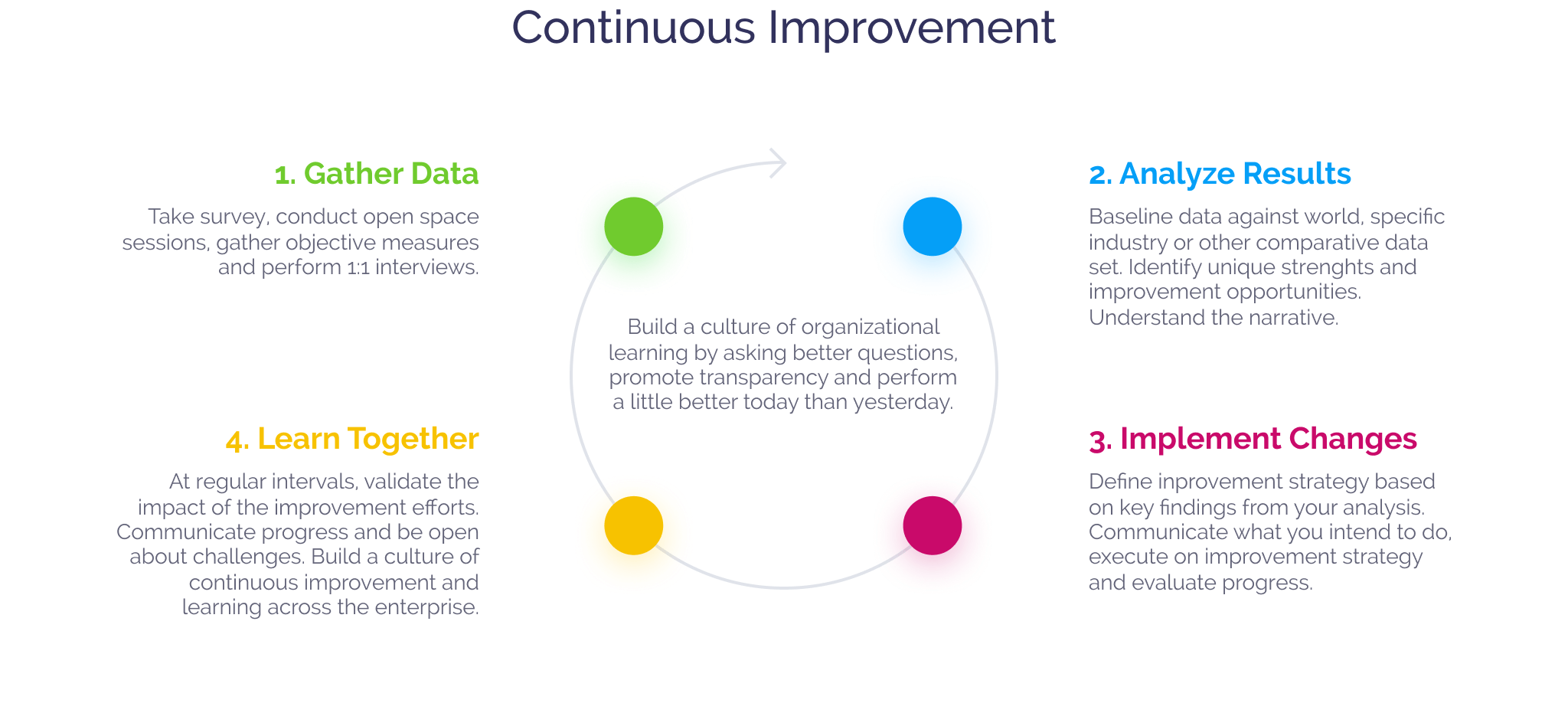Comparative Kanban
In environments with high levels of variability and uncertainty, being able to quickly respond to change is essential. Kanban, with its focus on visualizing work, limiting WIP, focus on flow and continuous improvement is ideal in these types of environments.
Created by:
Comparative Agility
Get the most out of your investment in Kanban
Comparative Kanban is helping you by identifying where you can improve how you work, where you should amplify your efforts further and fuel a data-driven approach to continuous improvement.
Essential Kanban
Comparative Kanban focuses on proven aspects of what makes Kanban successful: actively managing flow, making policies explicit, implementing feedback loops and limiting WIP - it's all here.
Trusted Content
Our survey instruments are created by established practitioners and thought leaders in the field - and validated by our staff of data scientists through a rigorous process of analysis.
Instantly Actionable
The survey is designed to provide organizations with insights that are both practical and actionable right away. By providing your teams with a voice you can quickly help them where it's relevant to their context.
About Comparative Kanban
Kanban is the preferred way to work in environment with unpredictable work demands and in environments with high levels of uncertainty. Leverage Comparative Kanban to pinpoint exactly where you can help your teams and build a culture of continuous improvement.
Continuous Improvement
1. Gather Data
Take survey, conduct open space sessions, gather objective measures and perform 1:1 interviews.
2. Analyze Results
Baseline data against world, specific industry or other comparative data set. Identify unique strengths and improvement opportunities. Understand the narrative.
3. Implement Changes
Define inprovement strategy based on key findings from your analysis. Communicate what you intend to do, execute on improvement strategy and evaluate progress.
4. Learn Together
At regular intervals, validate the impact of the improvement efforts. Communicate progress and be open about challenges. Build a culture of continuous improvement and learning across the enterprise.

Sample Questions
Visualize
We resolve blockers with simple visual aids and escalation processes.
Limit WIP
Team visualizes work with queues, work-types, avatars, swim-lanes, blockers or explicit policies.
Make Policies Explicit
We are aware of explicit policy / rules on when to pull work.
Manage Flow
Team meets on a regular cadence.
Improve
Team knows their goals, why it exists and what is their criteria for success.
Implement Feedback Loops
Key stakeholders provide regular feedback based on the current situation.
Outcomes
We are more responsive to our customer(s) than before.
Visualize
Team visualizes work with queues, work-types, avatars, swim-lanes, blockers or explicit policies.
Limit WIP
WIP limits help us commit to finishing work over starting new work.